1950 KOREAN WAR SEOUL INCHEON Photo Album with War Medal RARE VIEWS
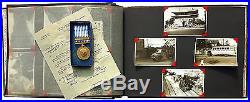
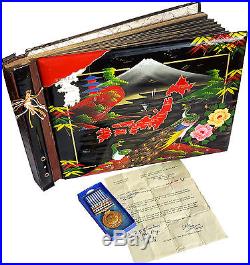
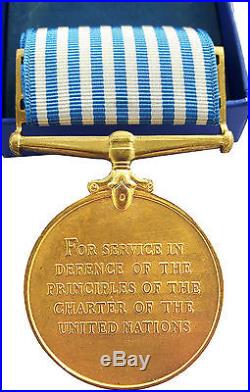
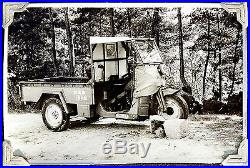
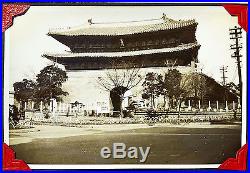

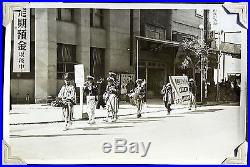

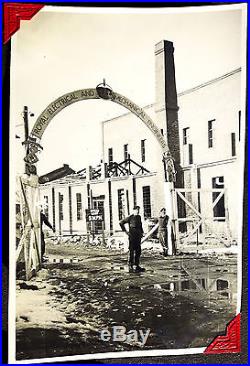
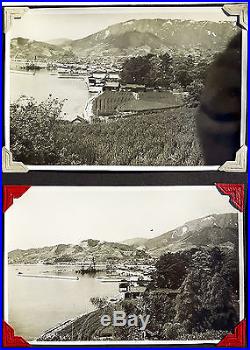

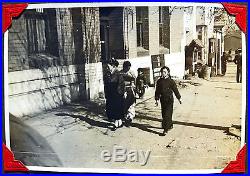

1.888.656.2006 or 1.604.922.2444. Rare books at fair prices... Asia - China & Japan. Album of snapshot photographs from the Korean War, of an English officer, R. Chambers of Watford, Hertfordshire, who served with British No.
1 Infantry Troops Recovery Unit, Royal Electrical & Mechanical Engineers (REME). Together with the officer's United Nations Service Medal for Korea (UNKM) in its original blue box, and with the original letter of issue from the Royal Army Medal Office stamped 26 January 1956. Album contains 103 photographs taken at Seoul and Inchon [Incheon], a few with the officer's manuscript captions to verso, each mounted with corners onto black cardstock leaves separated with tissue guards.Photographs vary in size, the smallest measuring approximately 4,5 x 5,5 cm, and the largest 12 x 8,5 cm. Small chips to album corners, decorative wooden panel to rear of spine cracked though not affecting the integrity of the binding, otherwise items are in Very Good Condition, a beautiful and solid album with crisp photographs and a clean, well-preserved medal. This album provides an unusually thorough visual tour of the military camps of the 1st Commonwealth Division, R.
Recovery Unit, both at Seoul and at Incheon during the Korean War, as well as city views with glimpses into civilian life. Centered largely on the camp of the Recovery Unit to which he was posted , a sign within the camp also shows the tents of New Zealand's 162 and 163 military units. Several large military vehicles are shown, which suggest that he repaired many. Especially in the environs of Seoul, hilly landscape, rough terrain, narrow roads with sharp bends took a great toll on the army trucks and tanks, engine and gearbox life was estimated no more than 500 hours, a recovery unit mechanic's job was a demanding one. Even retrieving a disabled vehicle was quite a challenge as the American troops had been ordered to destroy all bridges.
Capturing his interest, he includes a snapshot photograph of a Chinese three-wheeled truck with canopy cover and glass windshield for the driver, and open back for cargo or passengers, sometimes known as a triporter. Their design originated in Russia, and in their most basic form, were little more than a trailer attached to an engine by a pivoting beam.
The engine drove the front wheel by means of a belt transmission. They came in three and four wheeled versions. Similar models continue to be produced today for commercial purposes. Two harbour views show Inchon prior to General Douglas MacArthur's invasion known as the Battle of Inchon.
Incheon was occupied by North Korean troops on 4 September 1950. The amphibious invasion took place from 10-19 September 1950, involved some 75,000 troops and 261 naval vessels, and was a decisive victory and strategic reversal in favor of the United Nations.
The campaign led to the recapture of the South Korean capital of Seoul two weeks later. Chambers also includes images of the military rest center at Inchon [Incheon], situated in a park-like setting, and offering the men some reprieve from war duty.
In Seoul he captures city street views with Koreans going about their regular routine. He includes a photograph of the iconic'South Gate' or Namdaemun, officially known as the Sungnyemun (Gate of Exalted Ceremonies), being one of the eight gates from the fortress wall which surrounded the city back in the Joseon dynasty.
A photograph of a downtown theatre advertising Abbott and Costello's 1955 film "Meet the Keystone Kops" suggests that Chambers continued to serve in Korea for some time during the post-Armistice period. Serving in the British Army, and ultimately assisting both the United Nations and the United States of America in defending and protecting South Korea, officer Chambers received the United Nations medal for his service in the Korean War. The United Nations Service Medal for Korea (UNKM) was established on December 12, 1950. The military decoration was the first international award ever created by the United Nations, and recognized the multi-national defense forces which participated in the Korean War. Together with the original letter of issue from the former Army Medal Office in Droitwich, the medal is in remarkable condition, its ribbon clean and bright, carefully preserved in its original box.
The 1st Commonwealth Division was the name given, after July 1951, to Commonwealth land forces in the Korean War. The division was a multinational unit that was part of British Commonwealth Forces Korea, and whilst British and Canadian Army units formed the bulk of the division, Australian infantry, New Zealand artillery and an Indian medical unit were also a part of the division.
It was made up of 58% British forces, 22% Canadian forces, 14% Australian forces, 5% New Zealander forces, and 1% Indian forces. The unit was preceded by the 27th British Commonwealth Brigade, which was the initial parent formation of Commonwealth army units in Korea, and which arrived in Korea in August 1950. The 1st Commonwealth Division was part of the US I Corps, which also included the US 1st Cavalry Division, the US 3rd and 25th Infantry Divisions, and the ROK 1st Division.The division participated in Operation Minden, and in Operation Commando which seized the Jamestown Line and destroyed some of Chinese Army groups. The strategically important sector of front on the Jamestown Line, stretched from the Kimpo peninsula on the Yellow Sea coast to a point east of Kumhwa about 6.3 miles (10.1 km), and just 30 miles (48 km) from the South Korean capital, Seoul. The 23rd Heavy Recovery Section (29 Brigade) of R.
(Royal Electrical & Mechanical Engineers), which comprised some 50 men, had base camps at both Inchon and Seoul. And the first to arrive in Korea from the U. Were responsible for the maintenance, repair and recovery of all equipment including vehicles, machinery, electronic cmmunication devices, and the like. The Armistice Agreement ending the Korean War was signed on 27 July 1953. British Army infantry combat units, including the REME, continued to be deployed in Korea in the post-Armistice from 28 July 1953 to 26 July 1957. As part of the demobilisation of forces after the war, however, REME was reduced to a Commonwealth Brigade Group in 1954, and subsequently, from May 1956 until its final withdrawal in August 1957, to a Commonwealth Contingent of battalion strength. The item "1950 KOREAN WAR SEOUL INCHEON Photo Album with War Medal RARE VIEWS" is in sale since Saturday, April 01, 2017.This item is in the category "Collectibles\Photographic Images\Contemporary (1940-Now)\Other Contemporary Photographs". The seller is "voyagerpress" and is located in Blaine, Washington. This item can be shipped worldwide.
